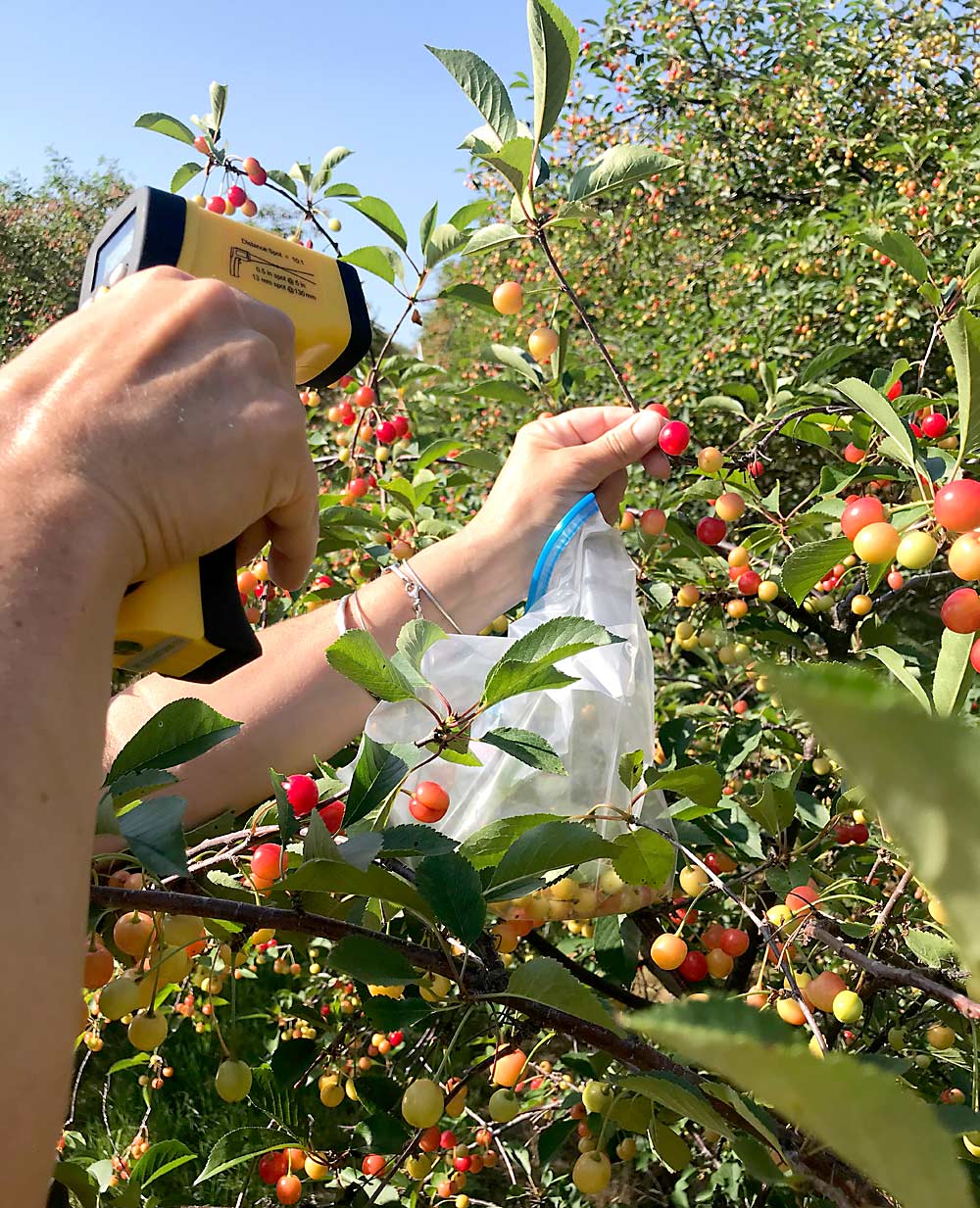
The spotted wing drosophila has wreaked havoc in Northwest Michigan’s tart cherry orchards in the past few years, and growers and researchers have struggled to find effective tools to fight it.
Now, Michigan State University researchers think they’ve found one: a tool that, though it won’t stop SWD, will at least help growers spray insecticides more efficiently.
The invasive pest first arrived in the region — which produces more than two-thirds of U.S. tart cherries — in 2014. At first, SWD, which lays its eggs in thin-skinned fruit, didn’t do a lot of damage because it emerged after the cherries were harvested. But it emerged earlier and earlier each year, and within a few years SWD was causing annual crop losses of at least 20 percent, said Nikki Rothwell, coordinator of MSU’s Northwest Michigan Horticulture Research Center.
Growers could always spray insecticides, of course, and they sprayed plenty. But because the pest was so new and they didn’t understand its behavior, they were never quite sure when or how much to spray. As soon as they caught one fly in one trap, they’d start spraying and would keep at it until the end of harvest. A lot of growers abandoned the integrated pest management programs they’ve been practicing for decades. All that spraying eats into grower profits, which already have been low in recent years, she said.
Rothwell and others wondered if growers were spraying too much too early in the season, before SWD really became a problem. They knew there was a time period when the bug started doing damage. They just needed to pin it down.
“There’d be almost no infestation one day, then you’d come back the next day and boom — lots of trees or sections of orchards were infested,” she said.
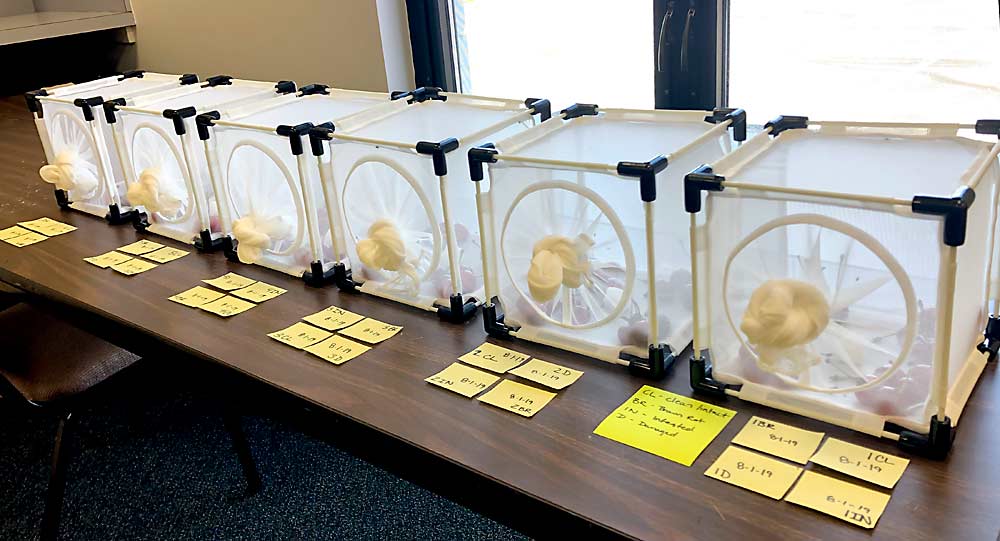
Rothwell suspected the timing had more to do with the fruit than the bug. To find out, she and other MSU researchers decided to see if they could use a growing degree-day model to pinpoint when exactly SWD females lay eggs in Montmorency cherries — the vast majority of tart cherries grown in Michigan.
In three years of lab tests, the team evaluated different phenological stages of Montmorency throughout the growing season to determine if there is a stage of ripeness that triggers SWD oviposition. They tested differences in fruit color, firmness, penetration, force, Brix and size. Their results showed that color development is a significant factor in initiating SWD oviposition. They also discovered that SWD flies won’t lay eggs in fruit until about 1,150 growing degree-days have accumulated after bloom, with a higher likelihood of infestation after 1,200.
This combination of ripeness, heat accumulation and documented phenological development has helped them pinpoint the timing of SWD infestation with promising accuracy so far. They decided to verify this new SWD risk model in the field last year, in both Northwest and Southwest Michigan. Happily, they found that the data from their field trials matched the data from their lab trials.
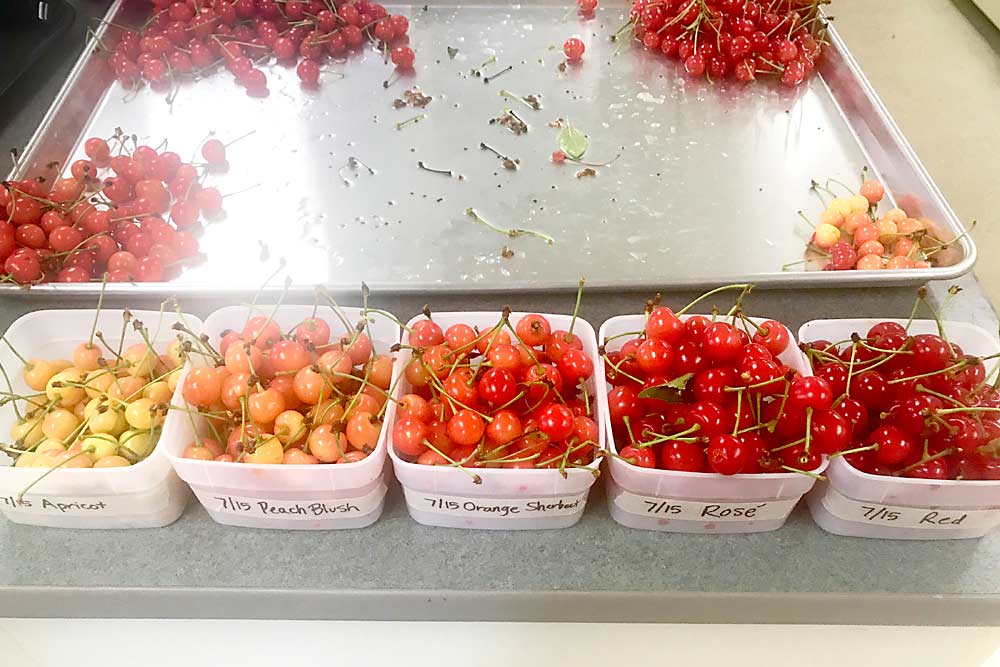
“I’m thrilled with where we are right now,” Rothwell said. “It won’t solve SWD, but at least in tart cherry we have a way to understand when to initiate spray programs. I think there’s some light at the end of the tunnel with this risk model.”
Hannah Burrack, associate professor of entomology at North Carolina State University and director of the Sustainable Spotted Wing Drosophila Management project, a national effort to reduce reliance on pesticides for SWD control, said approaches such as the cherry risk model can work well, but much depends on crop and region. If flies are present in blackberries, for example, infestation can begin when fruit starts to turn pink — so growers know to focus management on those time periods.
“If you have a good understanding of fruit ripeness timing and fly presence, it is reasonable to put that information together to make decisions,” she said.
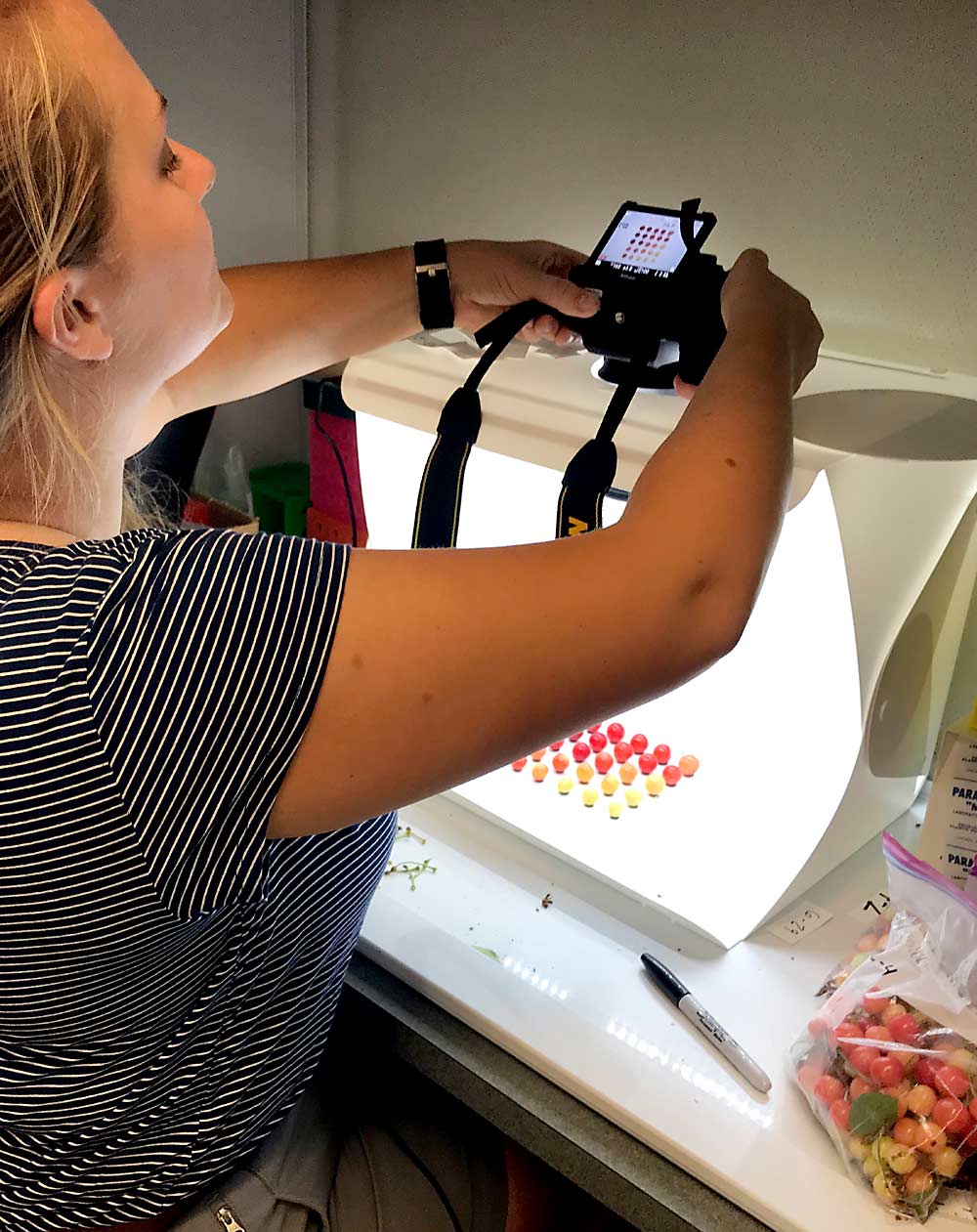
But fruit ripening and fly activity periods don’t always overlap. Blueberries, for example, can be infested when they are ripe, but in North Carolina, fly populations are low during southern highbush blueberry harvest. In that situation, rather than treating when fruit are ripe, Burrack recommends growers start treating at first SWD capture.
Rothwell’s team also confirmed that insecticides delay SWD infestation, even when cherries are at a susceptible stage.
But there appears to be no relationship between SWD trap data and data from the risk model. Rothwell isn’t ready to abandon SWD trapping, but she’s not sure if it’s an accurate way to measure risk.
Though the risk model is built around Montmorency tart cherries, they’ve used it on sweet cherries, too, and the results are “pretty darn close.” They hope to do more work on sweet cherries this year.
Rothwell plans one more year of field research to further refine the model and collect more data. They need to better understand how insecticides delay infestation, for one thing.
The SWD risk model for cherries is available on the test version of MSU’s Enviroweather website, at https://alpha.enviroweather.msu.edu. •
—by Matt Milkovich

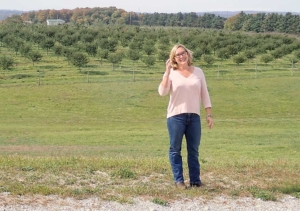
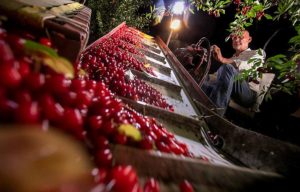





Leave A Comment